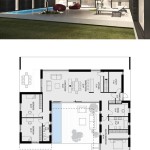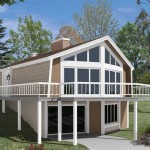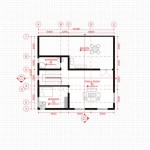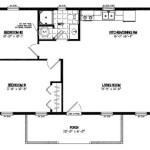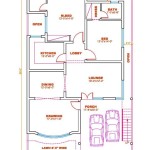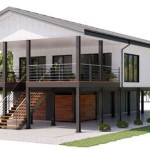Antique House Plans: A Look At Classic Home Designs
Antique house plans offer a captivating glimpse into architectural styles and living preferences of past eras. These blueprints, often meticulously drawn and preserved, provide valuable insights for historical preservationists, architectural historians, and homeowners seeking to restore or replicate period-authentic residences. Examining these plans reveals not only the aesthetic features of bygone days, but also the practical considerations that shaped domestic life centuries ago.
The term "antique house plan" commonly refers to architectural drawings and specifications created prior to the mid-20th century. These plans encompass a wide range of architectural styles, from simple vernacular dwellings to grand estates, reflecting the social stratification and regional variations prevalent throughout history. The study of these plans allows for a deeper understanding of construction techniques, material usage, and spatial organization relevant to different periods.
The preservation of these historical documents is crucial for maintaining architectural heritage. Many archives, historical societies, and libraries actively collect and catalog antique house plans, making them accessible for research and restoration projects. Digitization efforts have further broadened access, enabling individuals to explore these designs from anywhere in the world.
Key Features and Considerations in Antique House Plans
Antique house plans differ significantly from modern construction documents. Understanding these differences is essential for accurate interpretation and effective utilization. Several key aspects warrant careful consideration.
First, the level of detail presented can vary widely depending on the architect or draftsman, the intended purpose of the plan, and the era in which it was created. Some plans offer comprehensive specifications, including framing details, electrical layouts, and plumbing schematics. Others may focus primarily on floor plans and elevations, leaving many construction details to the builder's discretion. Consequently, interpreting these plans often requires a certain degree of specialized knowledge and a familiarity with historical building practices.
Secondly, the units of measurement used in antique house plans may differ from contemporary standards. Imperial units, such as feet and inches, were common, but older plans may utilize local or regional measurement systems. Converting these measurements to modern units is often necessary for accurate reproduction or adaptation. Furthermore, understanding the conventions used for representing materials and symbols is crucial for proper interpretation. Shading, hatching, and other graphic techniques were employed to denote different building materials, structural elements, and fixtures.
Thirdly, the functionality and spatial organization of antique houses often reflect different social norms and lifestyles than those prevalent today. Separate rooms for specific activities, such as parlors, dining rooms, and servants' quarters, were common features of affluent homes. Kitchens were often located at the rear of the house, away from the main living areas, and were primarily functional spaces rather than social gathering places. Understanding the intended use of each space is essential for appreciating the overall design and adapting it to contemporary needs.
Common Architectural Styles Represented in Antique House Plans
Antique house plans represent a diverse range of architectural styles, each characterized by distinctive features and historical influences. Identifying the architectural style of a particular house plan can provide valuable context for understanding its design and construction.
Colonial architecture, prevalent in North America from the 17th to the 19th centuries, is often characterized by symmetrical facades, simple rectangular shapes, and classical detailing. Common features include central entrances, evenly spaced windows, and gable roofs. Antique house plans for Colonial-style homes often reflect the influence of European architectural traditions, adapted to the local climate and available materials.
Victorian architecture, popular during the 19th century, encompasses a variety of sub-styles, including Queen Anne, Italianate, and Gothic Revival. Victorian homes are typically characterized by elaborate ornamentation, asymmetrical designs, and steeply pitched roofs. Antique house plans for Victorian homes often feature intricate detailing, such as decorative brackets, stained-glass windows, and ornate trim work. These plans reflect the emphasis on craftsmanship and aesthetic embellishment that characterized the Victorian era.
Arts and Crafts architecture, which emerged in the late 19th and early 20th centuries, emphasized natural materials, handcrafted details, and a rejection of mass-produced ornamentation. Arts and Crafts homes are typically characterized by low-pitched roofs, wide eaves, and exposed rafters. Antique house plans for Arts and Crafts homes often feature open floor plans, built-in cabinetry, and a focus on integrating the house with its natural surroundings. These plans reflect the movement's emphasis on simplicity, functionality, and a connection to nature.
Utilizing Antique House Plans in Contemporary Projects
Antique house plans can serve as valuable resources for a variety of contemporary projects, including historical restoration, adaptive reuse, and new construction inspired by historical styles. However, successful utilization requires careful consideration of several key factors.
Historical restoration projects often rely heavily on antique house plans to ensure the authenticity and accuracy of the restoration work. These plans provide detailed information about the original design, materials, and construction techniques, enabling restorers to recreate the building as closely as possible to its original condition. However, it is important to note that antique house plans may not always be complete or fully accurate. Comparing multiple sources, including historical photographs, written accounts, and physical evidence, is often necessary to obtain a comprehensive understanding of the building's history.
Adaptive reuse projects involve converting historic buildings for new purposes, while preserving their architectural character. Antique house plans can inform the design of these projects by providing insights into the original spatial organization, structural systems, and aesthetic features of the building. Architects and designers can use this information to create new layouts and functionalities that respect the building's heritage while meeting contemporary needs. Careful consideration of accessibility requirements, energy efficiency standards, and modern building codes is essential for successful adaptive reuse projects.
New construction projects inspired by historical styles can also benefit from the study of antique house plans. These plans can provide inspiration for creating historically informed designs that capture the essence of a particular architectural period. Architects and designers can adapt elements from antique house plans, such as floor plans, elevations, and detailing, to create new homes that blend historical aesthetics with modern functionality. However, it is important to avoid slavish imitation and to create designs that are appropriate for contemporary living while respecting the historical context.
In all these applications, a thorough understanding of the historical context, architectural style, and construction techniques is paramount. Consulting with architectural historians, preservation specialists, and experienced builders can help ensure the success of any project involving antique house plans.
The use of modern technology can also aid in the interpretation and application of antique house plans. Digitization allows for easy access and manipulation of these documents, while computer-aided design (CAD) software can be used to create accurate reproductions and modifications. However, it is important to remember that digital tools are simply aids and should not replace a thorough understanding of the historical source material.
Ultimately, antique house plans offer a valuable connection to the past, providing insights into the architectural traditions and living preferences of previous generations. By carefully studying and interpreting these plans, individuals can gain a deeper appreciation for architectural history and utilize this knowledge to inform contemporary design and preservation efforts.

House Plans Floor Blueprints
:max_bytes(150000):strip_icc()/cloudland_0_0_0-c8f98341bc474c458a8dc3ed2bf01228.jpg?strip=all)
Our 30 Best Cottage House Plans

A Complete Guide To Victorian Style Houses

Floor Planning For An Old American Foursquare Highland House Living

1926 Portland Homes By Universal Plan Service No 571 Bungalow Floor Plans House Vintage

House Plans Floor Blueprints Home Designs

It Only Looks Old A New Shingle Style House With Classic Homes Styles
:max_bytes(150000):strip_icc()/SL-1873_FCP-8cf5801247c34df0b8bd839eeea78d4d.jpg?strip=all)
Our 30 Best Cottage House Plans
:max_bytes(150000):strip_icc()/randolph_1_0_0-cb68d6176e9b4c20b661dba3d7aae29b.jpg?strip=all)
Our 30 Best Cottage House Plans

Plan 69460am Classic French Country Design With 3 Bedrooms House Plans Style
Related Posts


